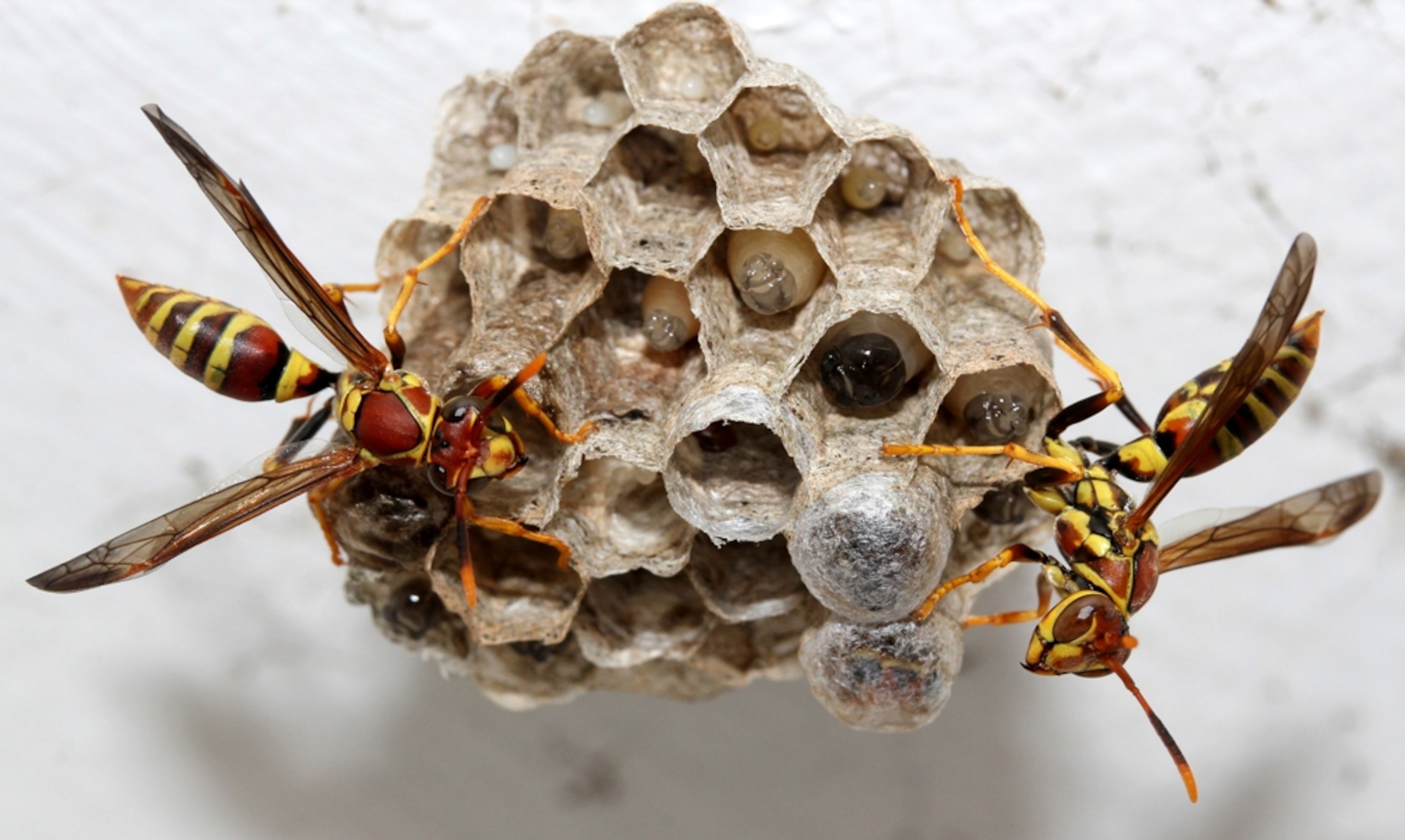
The Distributed Brainpower of Social Insects

Here’s David Attenborough, chilling out on a rock in the middle of Africa, with four lumps of plasticine. The smallest one on the far left represents the brain of a bushbaby, a small primate that lives on its own. The next one is the brain of a colobus monkey, which lives in groups of 15 or so. The one after that is a guenon, another monkey; group size: 25. And on the far right: a baboon that lives in groups of 50. “Were you to give a skull to a researcher who works on monkeys, even though they didn’t know what kind of monkey it belonged to, they would be able to accurately predict the size of group in which it lived,” says Attenborough.
That sequence, from The Life of Mammals, is a wonderful demonstration of the social brain hypothesis—a bold idea, proposed in the 1980s, which suggests that living in groups drove the evolution of large brains. Social animals face mental challenges that solitary animals do not: they have to recognise the other members of their cliques, cope with fluid and shifting alliances, manage conflicts, and manipulate or deceive their peers. So as social groups get bigger, so should brains. This idea has been repeatedly tested and confirmed in many groups of animals, including hoofed mammals, carnivores, primates, and birds.
What about insects? Ants, termites, bees, and wasps, also live in large societies, and many of them have unusually big brains—at least, for insects. But in 2010, Sarah Farris from West Virginia University and Susanne Schulmeister from the American Museum of Natural History showed that in these groups, large brains evolved some 90 million years before big social groups. If anything, they correlated with parasitic body-snatching rather than group-living.
“That got people thinking,” says Sean O’Donnell from Drexel University. “In recent years, there’s been a growing rumbling, almost subterranean movement arguing that social brain ideas may not apply to the social insects.” His new study is the latest addition to that movement.
O’Donnell’s team studied potter wasps, which lead solitary lives, and the closely related paper wasps, which live in colonies of varying sizes and complexities. They collected queens and workers from 29 species of these wasps, carefully dissected their brains, and measured the size of their mushroom bodies—a pair of structures in insect brains that control higher mental abilities like learning and memory.
And to their surprise, they found that as the wasp colonies got bigger, their mushroom bodies got smaller. Even within the social paper wasps, the team found that species with distinct queens and workers—a sign of a more complex society—have similarly sized mushroom bodies to those with no such castes.
“The pattern is so clear,” says O’Donnell. “Sociality may actually decrease demands on individual cognition rather than increasing it.”
“Here we have the first concerted evidence that costly brains aren’t needed to allow sociality, when you can do it other ways,” says Robin Dunbar, who first proposed the social brain hypothesis. “There are many routes to sociality.”
What other routes? O’Donnell notes that insects and (most) mammals build their societies in fundamentally different ways. Large mammal societies typically include individuals who are distantly related or even unrelated. Insect societies, by contrast, are basically gigantic families, where all the members are either queens (which reproduce) or their descendants (which do not). You could view these colonies less as groups of individuals and more as extensions of the queens.
As such, their members don’t particularly need to keep track of shifting relationships, or manage conflicts, or manipulate their peers, or any of the other social challenges that, say, a baboon or a human faces. They have less of a need for bigger and more sophisticated brains.
Social insects also benefit from swarm intelligence, where individuals can achieve astonishing feats of behaviour by following incredibly simple rules. They can build living buildings, raise crops, vaccinate themselves, and make decisions about where to live. In some cases, they make decisions in a way that’s uncannily similar to neurons—a colony behaves like a giant brain, and in more than a merely metaphorical way. They have a kind of ‘distributed cognition’, where many of the mental feats that other animals carry out using a single brain happen at the level of the colony.
Entomologist Seirian Sumner from Bristol University says that there are mammals, like meerkats and banded mongooses, which live in simple societies where adults cooperatively raise their young. These are often compared to primitively social insects, like paper wasps. “They share very similar family structures, group sizes and plasticity in behavioural roles,” Sumner says. It would be very interesting to see if the brains of these mammals follow the same patterns as those of O’Donnell’s wasps.
O’Donnell is all in favour of more studies. He wants to see if the same patterns hold in other insect groups that include both social and solitary species, including bees and cockroaches. And he’s intrigued by the naked mole rats—colonial mammals that have queen and worker castes, much like ants and wasps. “If our ideas are correct, we’d expect to see mole rats following a similar pattern to insects,” he says.
Reference: O’Donnell, Bulova, DeLeon, Khodak, Miller & Sulger. 2015. Distributed cognition and social brains: reductions in mushroom body investment accompanied the origins of sociality in wasps (Hymenoptera: Vespidae). Proc Roy Soc B. Citation tbc.
PS: The size of brain regions isn’t always the best indicator of intelligence. I asked O’Donnell about this, and he stands by his decision to focus on the mushroom bodies. “It’s definitely a blunt tool for studying brain evolution,” he says. “Brain tissue is metabolically very expensive, and even if it was just filler, tissue weight is a big deal, especially for a flying insect. We expect there to be really strong constrains on the size of the [mushroom bodies].”
